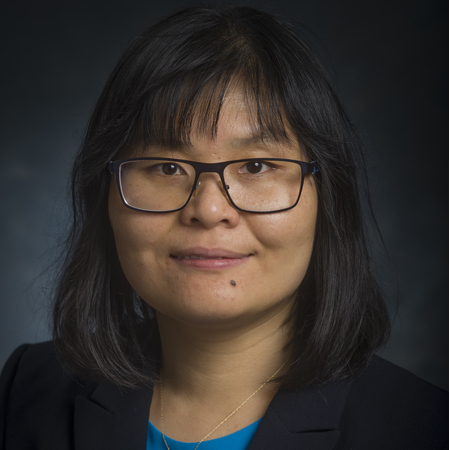Peer Reviewed Cancer



Posted November 16, 2021
Jianmei Leavenworth, M.D., Ph.D., University of Alabama at Birmingham
 Dr. Jianmei Leavenworth
Dr. Jianmei Leavenworth
Malignant glioma (MG) is a type of high-grade, primary brain tumor with poor patient outcomes and limited treatment options. The American Cancer Society estimates that there will be approximately 24,530 new cases of brain and other nervous system cancers in 2021 and about 18,600 deaths.1,2 The current standard of care for MG includes surgery, radiotherapy, and chemotherapy. Despite aggressive intervention, disease progression in MG is characterized by recurrence, neurologic degeneration, and fatal outcomes. Patients with MG have a median survival of less than 15 months. Identifying novel therapeutic opportunities that are safe and effective represents a critical unmet need for patients with MG.
Over the past two decades, non-infectious oncolytic viruses (OV) have emerged as a potent cancer immunotherapy agent.3,4 Several OV platforms have been used in clinical trials to treat various solid tumors, blood cancers, and adult brain tumors. The first encouraging results from OV therapy, derived from the herpes simplex virus (HSV), came from a phase III trial for advanced metastatic melanoma. The treatment was given Food and Drug Administration approval in 2015. Oncolytic HSV (oHSV) was first adapted for treatment of MG patients in a phase 1 trial in the early 2000s. Results from the trial found that approximately 50% of patients treated with oHSV showed disease regression or stabilization.5 Advancing oHSV as a therapeutic option holds great promise.
Dr. Leavenworth is participating in a phase 1 clinical trial along with her colleagues using a genetically engineered oHSV, expressing human IL-12 (potent antitumor agent), in patients who had relapsed and had recurrent MG. Dr. Leavenworth hypothesizes that IL12-oHSV therapy induces a unique immune cell response to enhance anti-glioma activity. With the help of a Fiscal Year 2017 Peer Reviewed Cancer Research Program Career Development Award in the Topic Area of brain cancer, Dr. Leavenworth proposed to analyze peripheral blood samples and resected tumor tissues from enrolled trial participants. Using a mouse model system, Dr. Leavenworth studied how IL-12-oHSV therapy elicits an immune response. By evaluating the immunologic effects of IL-12-oHSV therapy, Dr. Leavenworth hoped to identify immune-biomarkers to reliably predict the efficacy of therapy and the patients who benefit.
Dr. Leavenworth's analysis of patient blood samples from the phase 1 clinical trial (above) revealed that following IL-12-oHSV therapy, the longest surviving patients (more than 12 months) had stable and sustained levels of immune factors, PD-1+CD8+ and PD-1+CD4+ T cells, prior to and post-therapy. The longest surviving patient also exhibited a higher proportion of effector/central memory population of immune factors compared to naive immune factors. An upregulation of eomesodermin (Eomes), a transcription factor implicated in the regulation of T cell cytotoxic and memory responses, was observed at early time points in the longest surviving patient. In contrast, a marked decline in Eomes and a smaller proportion of effector/central memory immune factors were found in patients with short survival.
Dr. Leavenworth obtained tumor tissue from a trial patient who had survived more than 12 months post-IL-12-oHSV therapy. Examination of the tumor tissue, taken 4 months post-treatment, revealed the presence of both cytotoxic immune cell types and immune cell types with memory potential. These intriguing results will be used by Dr. Leavenworth's team to understand the antitumor immune responses to IL-12-oHSV therapy and will help design and inform future oHSV clinical trials. Finally, Dr. Leavenworth is utilizing a mouse glioma model to examine the underlying mechanism of how IL-12-oHSV therapy induces anti-glioma responses. Initial results suggest that IL-12-oHSV therapy in mice increases the frequency of tumor-infiltrating immune factors and cytotoxic immune molecules. Future experiments will further characterize the immune response in mice following treatment and examine the function of immune cell types.
The findings from Dr. Leavenworth's study shed light on cancer immunotherapy mechanisms. The progress from this award may potentially lead to better strategies for patient prognosis and improve the survival benefit to the patients by selecting the best therapeutic approaches with oHSV virotherapy.
Links:
References:
1 https://seer.cancer.gov/statfacts/html/brain.html
2 https://www.cancer.org/cancer/brain-spinal-cord-tumors-adults/about/key-statistics.html
3 Aurelian L. 2016. Oncolytic viruses as immunotherapy: Progress and remaining challenges. OncoTargets and Therapy 9:2627-2637.
4 Kaufman HL, Kohlhapp FJ and Zloza A. 2015. Oncolytic viruses: A new class of immunotherapy drugs. Nature Reviews. Drug Discovery 14:642-662.
5 Markert JM, Medlock MD, Rabkin SD, et al. 2000. Conditionally replicating herpes simplex virus mutant, G207 for the treatment of malignant glioma: results of a phase I trial. Gene Ther 7:867-874.
Last updated Monday, March 10, 2025














